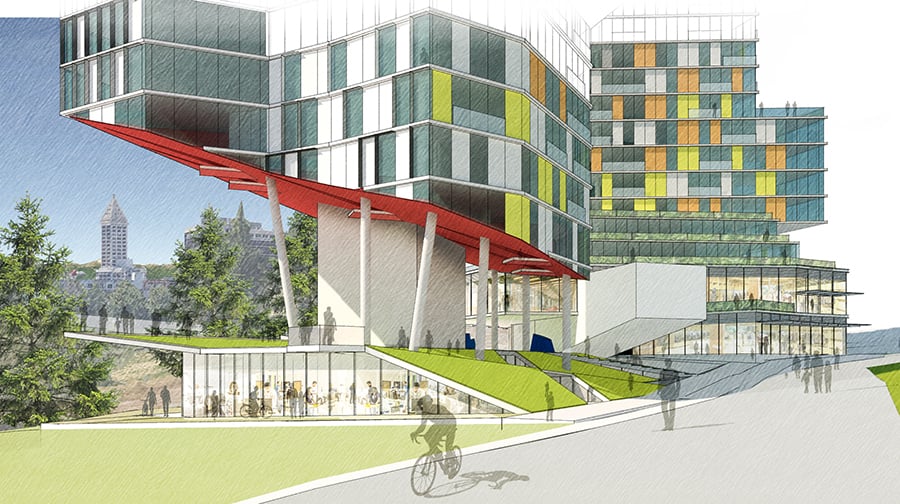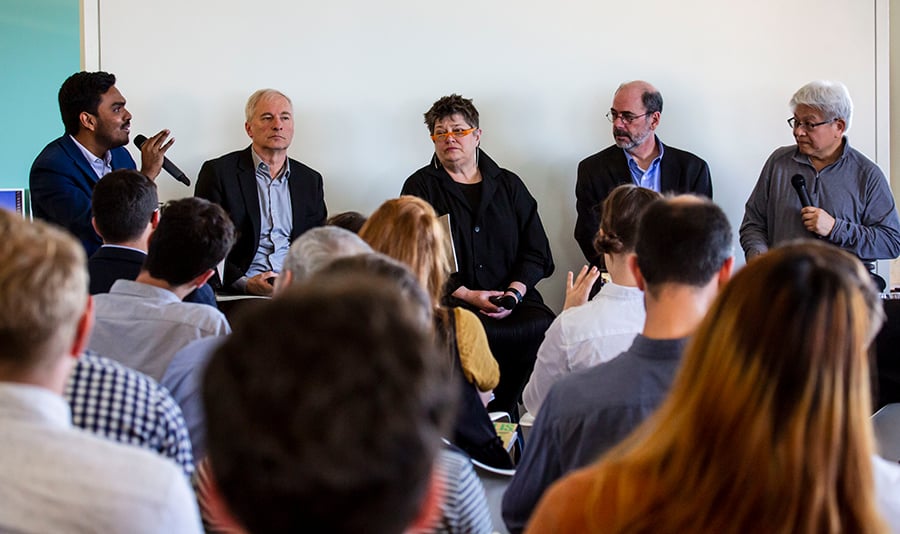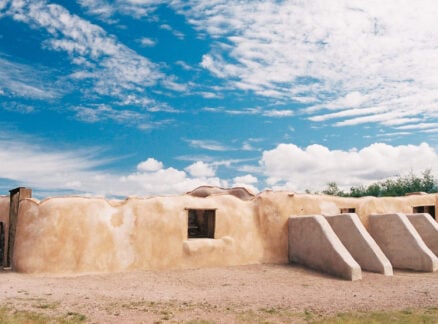
June 19, 2019
How to Bring Density to the Pacific Northwest’s Booming Cities
At Bohlin Cywinski Jackson, architects, planners, and developers looked into strategies to ensure a sustainable and equitable future for Seattle and its surrounding areas.

Nearly every metropolitan area in the U.S. is growing less dense, argued The New York Times’ Upshot column in 2017. Everywhere, that is, except Seattle. Bucking national trends, the Pacific Northwest’s largest city is urbanizing at a rapid clip, offering a living laboratory for densifying a U.S. city.
A recent Think Tank panel grappled with the implications of that growth at the downtown Seattle office of architecture, planning, and interior design firm Bohlin Cywinski Jackson (BCJ), which has been at the forefront of creative designs to ease the Emerald City’s transition from a city of Craftsman bungalows to a more varied urban form.
Variety is key, argued Rick Mohler, a practicing architect who co-chairs AIA Seattle’s public policy board. “We’re often looking for a silver bullet to address these challenges when in fact what we need is multiple strategies at multiple scales,” he said.
High-rise living is increasingly the norm in Seattle, which has built apartments at a frenzied rate with new top-of-the-line rentals largely serving the region’s ever growing high-tech—and largely millennial—workforce. John Su, a real estate developer, has worked with BCJ to add to the inventory in both Seattle and neighboring Bellevue, a once-sleepy suburb that now sports a downtown skyline.
“20 years ago when we talked about the American dream with the white picket fence and green grass around the house—that disappeared some time ago,” he said. However, Su pointed out the need to future-proof housing options by not just catering to a particular demographic, but rather by preparing for how people’s lives will change as they settle into their neighborhoods.
He noted approvingly that a school bus now pulls up to one of his properties in downtown Bellevue, collecting children in a building that was once filled with childless singles and young couples.

Mohler is bullish on backyard cottages and mother-in-law suites as other ways of increasing the diversity of housing. He sees potential for this “gentle density” as a possible antidote to the high property tax burden on low-income homeowners, who can keep their homes—and the wealth building that comes with it—while providing much-needed new affordable housing.
The problem is finding land on which to build. Mohler pointed out that three-quarters of the residential land in Seattle is zoned for suburban-style 10 unit per acre single-family housing. As a result, from 2010 to 2017, a period in which Seattle grew by 100,000 residents, 95% of the city’s growth was focused on 25% of the land area.
Mohler serves on the Seattle Planning Commission, which released a landmark report, “Neighborhoods For All,” in December 2018 highlighting that single-family zoning, now sacrosanct, is a recent, 1950s-era convention. “The third rail of politics in Seattle is how to think about increased flexibility, and missing middle housing, in single-family zones,” Mohler said.
In a metro area of 4 million, Seattle is only one piece of the puzzle. The region is building a $54 billion light rail and BRT system with 60 new stations. Mohler believes King County, which includes Seattle and Bellevue, could accommodate 300,000 transit-oriented units, enough to overcome a housing deficit expected to grow to 244,000 by 2040. But even with the transit construction well underway, Mohler worries the zoning fundamentals are not in place.
“We don’t yet have the flip side of that coin, which is ensuring that we build compete, walkable sustainable neighborhoods with lots of both market-rate and affordable housing in those station locations,” he said.
All of this growth has generated considerable civic angst over changing streetscapes, increased traffic congestion, and stubbornly persistent homelessness. In a city whose voters regularly approve levies to build libraries, parks, and fire stations, landscape architect Barbara Swift looks to these public amenities as one way to soften the rough edges of growth.
“The capital web—the commitment to build the civic infrastructure we all use together—helps take the pressure off,” she said. “That is an optimistic path at which to change the conversation: We can do this together.”
The Think Tank discussions were held on May 8 and 9, 2019, in Seattle. The conversations were presented in partnership with DXV/GROHE, Sunbrella, and Teknion.
You may also enjoy “Junya Ishigami’s Stone-Canopied Serpentine Pavilion Is Set to Open.”
Would you like to comment on this article? Send your thoughts to: [email protected]
Recent Viewpoints
Viewpoints
The Politics of Adobe Architecture





